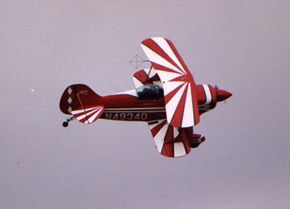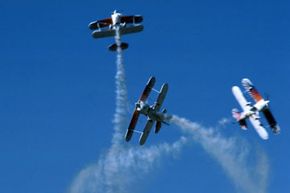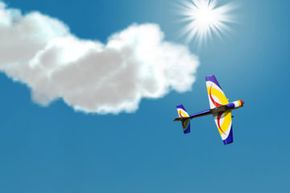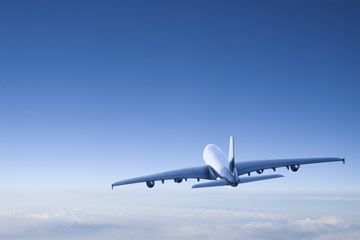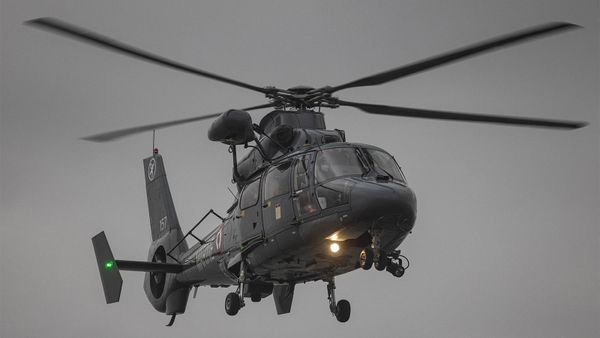It's pretty amazing that anyone can fly an airplane in the first place. But for an elite cadre of exceptionally skilled and extremely nervy aviators, plain old straightforward flight isn't thrilling enough. Instead, in the parlance of test pilots, these aviators push the envelope, doing exotic midair maneuvers -- loops, rolls, spins, abrupt changes of direction, and even flying straight up like a rocket. These tricks are so gravity-defying that even birds would be envious.
This type of flying is called aerobatics, and it's almost as old as the airplane itself. In fact, the very first aerobatic flyers were Orville and Wilbur Wright, the two men who invented the airplane itself.
Advertisement
In September 1904, only nine months after their first-ever heavier-than-air powered flight, the Wrights successfully performed the first aerobatic maneuver, a 360-degree banked turn. The feat was more amazing than you might think because ailerons, the hinged panels that go up and down to tilt a fixed-wing aircraft to the left or right, hadn't yet been invented. Instead, the brothers utilized a cumbersome system that actually tilted the entire wing [source: Sheffield].
Aerobatics soon morphed into hair-raising, daredevil entertainment for spectators at county fairs and air shows. And it's now evolved into an established international sport, with rules and regulations and records.
In this article, we'll look at the types of tricks aerobatics pilots perform, and how they manage to pull them off safely and land in one piece -- or not. But first, let's take a closer look at the history of aerobatics and the sport's true pioneers.
Advertisement
